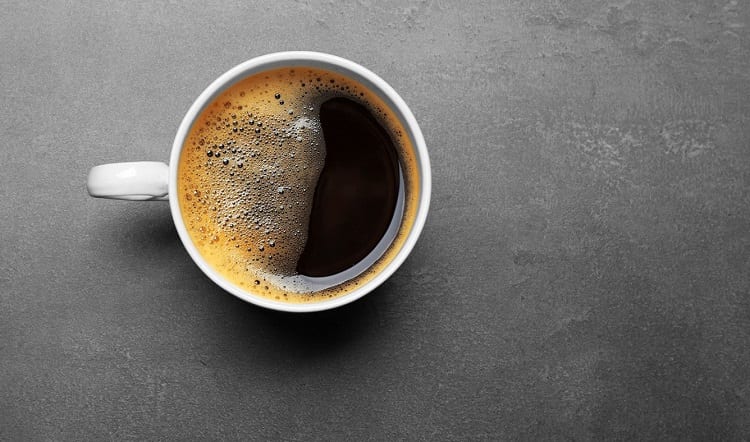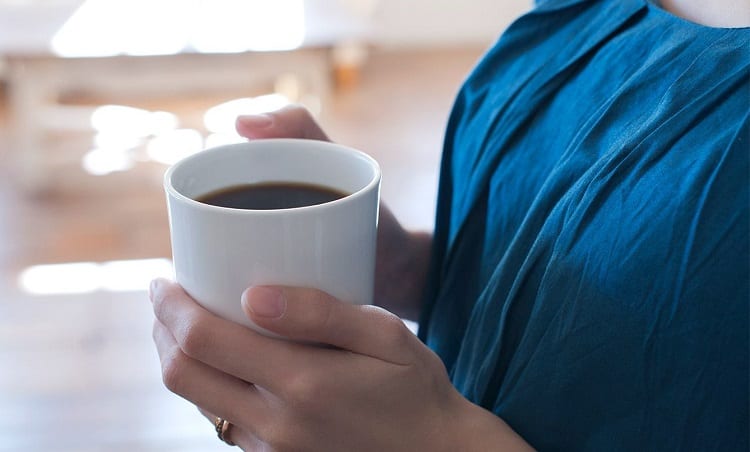Decaf coffee gets a really bad rep, but when done right, it’s just as enjoyable as fully caffeinated coffee.
But most people don’t even know how you extract the caffeine from coffee so let’s get it straight.
Let’s discuss all the different ways that you can decaffeinate coffee, and go over the advantages that some of these methods have over others.
What Exactly Is Decaf?

Let’s get something straight right now—fully, 100% decaffeinated coffee does not exist.
Even though Europe has its 0.1% caffeinated law with decaf coffee, it’s still a process that is not perfect or foolproof.
However, it can remove so much caffeine that even those with sensitivities won’t be triggered.
Decaf coffee is coffee without the natural presence of caffeine.
Through three main methods (and one not-so-practiced method), coffee beans are stripped of their caffeine while trying to maintain their flavor.
Regardless of how flavorful decaf coffee can be, caffeine itself does have a flavor that we can detect and enjoy.
Decaf coffee actually does taste different than other types of coffee, even if it’s just a subtle difference that you don’t pick up on right away.
What Are The Different Decaffeination Processes?
Organic Chemical Solution
Chemicals are poured over the coffee beans that extract the water-soluble caffeine from the beans. This process can take as little as four hours and as long as thirty-six hours.
During this time, coffee beans will be cleaned and scrubbed to make them viable for sale while stripping up to 97% of all caffeine from the beans.
While the chemicals are organic, there’s still something extra that is being infused with the coffee beans you plan to purchase.
For this reason, many of us don’t enjoy solvent-based solutions to decaffeinate our coffee.
Carbon Dioxide Treatment
As a non-solvent-based method, the carbon dioxide treatment uses a form of CO2 that’s pressurized in a stainless steel chamber with coffee beans.
The pressure of the CO2 is roughly 1,000 pounds per square inch, which is pretty rough. This strips the coffee of its caffeine, removing around 98% of all caffeine.
This process may be enacted again to coincide with European law, which states that decaffeinated coffee must contain 0.1% or less caffeine.
Swiss Water Method
The safest method for extracting caffeine from coffee, which has been proven to be 99% effective, is the Swiss water process.
As of right now, this process is only certified to be done in one location in the world, which is in Vancouver, Canada.
It’s one of the newer methods and was formally introduced to the market around 1988. It’s the only way to decaffeinate coffee effectively without chemicals or indirect solvents.
Using nothing more than water, green coffee beans are saturated until a process known as osmosis begins to take place.
It begins with hot water soaking the beans, just like you would imagine brewing ground coffee would be.
Then, the water runoff, which contains the water-soluble caffeine, is passed through an activated charcoal filter.
Basically, you end up with a lot of flavorless, caffeine-free beans within a 1% margin of error.
Then you have a filter that’s jammed with caffeine and extremely concentrated coffee-flavored water in another tank.
Those beans are thrown out. They’re no good anymore. Instead, the flavorful coffee water, which contains no caffeine, is then used in place of water in the next Swiss water process tank.
It removes the caffeine while keeping the flavor in the tank for the beans to soak in, so you end up with extremely flavorful beans and less than 1% caffeine.
How To Make A Decaf Cup Of Coffee?
You brew it just like you would brew any normal cup of coffee.
You just have to understand that it’s going to taste and smell differently since caffeine has been extinguished.
However, if you want to keep your decaf fresh for longer, then there are a few things you can do.
Invest in a thermal coffee pot and potentially a thermal coffee maker.
These use reflective pots that reflect heat so that your decaf can sit in its own echo chamber and remain flavorful and hot at the same time.
Decaf coffee, when it’s ground and when it’s brewed, will take a certain hit to flavor.
It goes stale faster, so it needs to be preserved in a thermal pot or drunk immediately to prevent bitterness from taking over your cup.
What Are The Benefits And Drawbacks Of Decaf Coffee?
Coffee is actually part of a healthy diet when it’s not loaded up with sugar and other additives.
If you can enjoy coffee as-is, decaf or not, you can enjoy some of these benefits.
We will mention where decaf has its benefits, but also where the decaffeinated process may impact the benefits of said coffee beans.
Drastically Reduces Stimulation
If you’re susceptible to caffeine and its stimulating effects, don’t worry: decaf coffee may only contain about 3 mg of caffeine per cup as opposed to the average of 140 mg.
It’s not enough to set you off, so you can still enjoy it without worry.
Antioxidant Profile
Antioxidants are an important part of your diet, but they’re also mostly consumed through coffee in the Western world. Coffee gives you plenty of them, but with the decaffeination process, you may see a reduction of antioxidants by about 15%.
This applies to solvent and non-solvent-based methods because there is no perfect way to decaffeinate a coffee bean.
Reduce Risks
Decaf still allows you to reduce your risk for type II diabetes, heart disease, and various types of cancers. If you continually drink coffee, you may even reduce your risk of Alzheimer’s and dementia by as much as 65%.
B Vitamin Goldmine
While it’s not the same as actually ingesting foods that are high in B vitamins, a little is better than nothing. B5, B3, B2, and B1 can all be found in coffee, regardless of its caffeine content or not. B3 and B5 see trace amounts, while B5 and B2 may provide between 20% and 44% of your RDA.
Neurodegenerative Disease Prevention
While Alzheimer’s and dementia have already been mentioned, coffee can also help you fight back against the neuron destruction that prefaces Parkinson’s disease.
Mood Changes
This is where decaf doesn’t take the cake. Since we see a reduction in chlorogenic acid (the main component of coffee that makes it so good for you), we also see a reduction in its benefits for mood stabilization.
Reaction time, focus, and reduced mental fatigue can all be attributed to caffeinated coffee, but the effects are rarely seen in decaf coffee.
Reduction Of Suicidal Tendencies And Depression In Women
While little to no effect was seen on men, women are far less likely to commit suicide or follow through with suicidal thoughts that are linked to depression while drinking coffee on a regular basis.
For this effect, two to four cups per day are recommended.
Decaf Is Still Good for You

While we see some reductions in the profiles of B vitamins, you can still reap the rewards of antioxidants, reduced neurodegenerative disease risks, and actually get some sleep in the process.
Coffee is arguably one of the most healthy things that you can drink, but if caffeine sets you off into a tizzy, it’s not worth it. Find a decaf that works for you.
How To Find A Decaf Coffee To Enjoy
Decaf coffee does come with less flavor, but it doesn’t have to stay that way.
Since the roasting process is the same, you can get a blend of decaf coffee by mix-matching various brands that you can purchase from your own home.
If you try one decaf and don’t like it, and you try another decaf and you don’t like it, just mix the two together.
There’s more room to explore, and who knows—you might even find the perfect blend to maintain the bold flavor you love without the caffeine.
A common practice is to blend 70% light roast Arabica coffee with 30% dark roast Arabica coffee.
This gives you a bold bit of flavor, maintains acidity, and keeps it nice and light if you plan on adding cream, sugar, or flavors to your coffee.
Make your own blend, or consider roasting your own green, decaffeinated beans by purchasing them from a roastery.
Fewer Jitters, Constant Flavor
If you’re sensitive to caffeine, then you really shouldn’t be drinking it.
Some of us have health concerns, but some of us just don’t want the jitters in the mid-afternoon or late evening when we’re trying to unwind.
If you still love the flavor of coffee (and who could blame you for that?) you can enjoy some proper decaf coffee, preferably through the Swiss water process.
Lean back and enjoy the flavor, and enjoy that sleep you’ll be getting about ten minutes afterward.